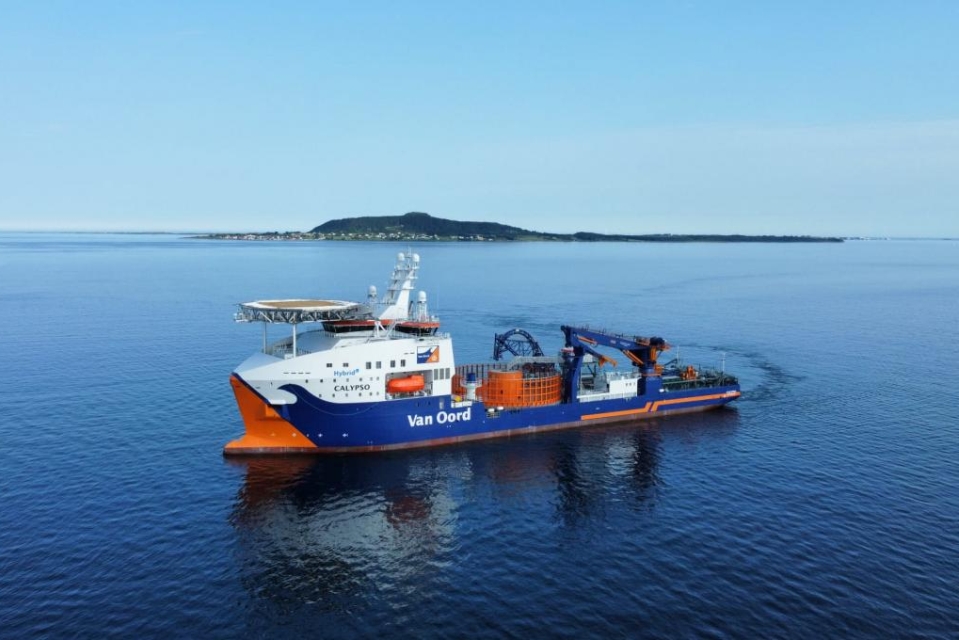On 9 September, Van Oord christened the trailing suction hopper dredger Vox Alexia and the cable installation vessel Calypso. A day earlier, the press, including SWZ|Maritime, was invited for several presentations under the heading “Van Oord & the energy transition”. Hot topics were developments in offshore wind and the Calypso.
Our editor Björn von Ubisch travelled to Rotterdam on 8 September to attend the presentations. An overview of what Van Oord presented:
Maurits den Broeder, managing director Offshore Energy at Van Oord, started off by explaining the importance of wind energy and how the energy produced by wind turbines have increased over the last ten years. The development is not progressing as fast as the industry wishes. One delaying item is for example that it takes eight years to obtain a licence to develop a wind farm.
Also read: VIDEO: Van Oord christens two new fleet additions in one day
Calypso
Pieter van Oord, CEO van Oord, continued with a technical presentation of the Calypso. It has two carousels, one above deck and one below deck with a total capacity of 8000 tonnes. The carousels are designed for HVDC (high voltage direct current) cables.
Both carousels can be loaded simultaneously and discharged over the stern simultaneously should the need arise. The Calypso has two cable tensioners, one for each carousel and two knuckle boom cranes serving the aft deck.
Calypso has three diesel generators, each of 3225 kW plus two battery banks, each of 1000 kWhr. The battery banks are for peak shaving during operation, but can also be used during black-out recovery, to run the appropriate thrusters for position keeping while the diesel generators are starting up after the blackout.
An urea selective catalytic reduction (SCR) scrubber system is installed to reduce NOx emissions. The diesel generators are designed for biofuel and have significantly lower CO2, NOx and SOx emissions.
Forward is one retractable thruster of 1500 kW and two tunnel thrusters of 2100 kW each. Aft are two azimuthing thrusters of 2500 kW each. Shore power can be low voltage to run the auxiliaries while in port, but can also be medium voltage to run the carousel and the spooling device while loading in port.
Also read: VIDEO: How Van Oord lays offshore cables with the Calypso
More environmentally friendly wind farms
Folkert Visser, CEO and Project Director Ecowende (Shell and Eneco in cooperation with Van Oord), explained how they design the wind farms to be more environmentally friendly by raising the wind turbine nacelle by five to ten metres higher than normal. This allows for a higher ground clearance for birds flying above the waves. Special bird corridors are made for migrating birds.
The traditional piling of the foundations has been reduced to a minimum and now the foundation piles are “vibrated” into the seabed with a minimum of disturbance. Underwater noise levels are reduced significantly.
Discarded fruit trees are installed at strategic locations along the cables on the seabed. These trees will encourage marine life, protect the cables and erosion will be reduced.
Jan Vos, Chairman of the Nederlandse WindEnergie Associatie (NWEA), informed about the growth and the significance of wind energy. The wind energy production offshore is estimated as follows:
- 2023: 4.5 GW
- 2030: 21 GW
- 2040: 50 GW
- 2050: 70 GW
Picture by Van Oord.
Also read: Ecowende and Van Oord to build ecological wind farm








